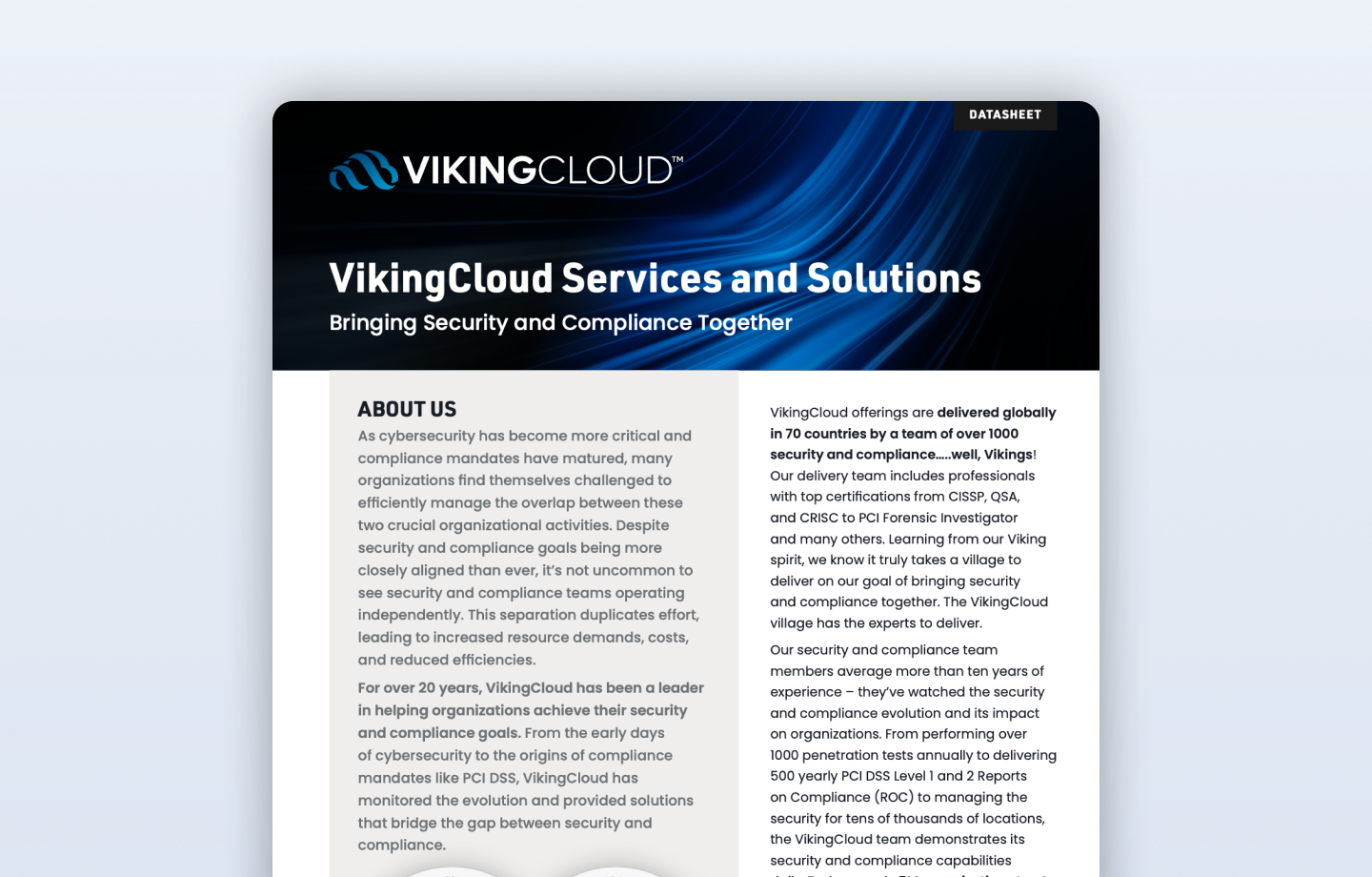Using Automation to Create an Efficient Compliance Framework (and Stay Sane).
I've been involved in assessments for compliance validation since 2005, first from a merchant perspective, and since 2007, as an auditor and assessor. I've seen first-hand that the burden of maintaining compliance, as well as providing evidence to substantiate compliance, has been steadily increasing.
The process of maintaining compliance can be time-consuming, resource-intensive, repetitive, and can strain even the most generous of budgets. The burden of manual compliance tasks often leads to audit fatigue, which can result in costly errors and oversights as well as high employment turnover rates.
The way to fight back: Automation
Taking manual processes out of audits and assessments can greatly simplify compliance requirements and reduce the risk of audit fatigue, resulting in a more efficient and effective compliance framework that ensures year-round compliance. In fact, the Australian Financial Review reported that Deloitte's Australia office did not meet ASIC (Australian Securities and Investments Commission) standards on half of the audits inspected. Deloitte admitted that it was because their auditors were tired. To remedy the issue, Deloitte executives have since indicated they would be investing heavily in technology.
Advantages of Automation in Compliance
- Increased Accuracy: Automation aids in reducing human error, which is one of the major contributors to compliance failures. Automated compliance processes can help ensure all steps are completed accurately and consistently.
- Improved Efficiency: Automation can significantly reduce the time and resources required to complete manual compliance tasks, freeing up time and resources to focus on core business activities and reduce the cost of maintaining compliance.
- Enhanced Risk Management: Automated compliance processes can provide real-time visibility into an organization's compliance status. By leveraging automation, businesses can proactively identify potential risks and compliance issues before they escalate.
- Increased Consistency: Automated compliance processes can help ensure consistent adherence to regulations and policies across an organization.
- Ongoing Assurance: Automation and ongoing reporting of compliance status help an organization to ensure they are compliant 365 days a year, not only when the auditor and assessor visit.
Creating an Efficient Compliance Framework using Automation - The Top 5
Based on my decades of experience participating in and observing countless compliance projects, I've come up with a number of best practices to consider:
Define the Compliance Objectives: The first step in creating an efficient compliance framework is to clearly define the compliance objectives for the organization. This will aid in determining the scope of the compliance framework and the types of processes and systems required to meet those objectives. Next steps:
- Identify data processed by performing data mapping exercises and dataflow analysis.
- Define what regulations you must comply with and your compliance objective.
- Establish the scope of the different compliance standards.
Evaluate the Current Compliance Processes: Once the compliance objectives have been defined, the next step is to evaluate the current compliance processes. This will make it easier to spot areas where automation can boost efficiency and streamline processes. Questions to ask:
- How are policies, procedures, and standards kept current and communicated to relevant parties?
- How is information collected to substantiate compliance?
- How is compliance status reported on?
- How is evidence to substantiate compliance communicated to assessors/auditors?
Implement Automated Compliance Processes: The third step involves the management, oversight, and implementation of automated compliance systems to help manage and monitor compliance activities. This could include automated policy management systems, automated compliance monitoring systems, and automated reporting systems, as well as secure means to share evidence with third-party auditors/assessors. Next steps:
- Implement a system to keep policies, procedures, and standards current.
- Ensure the review and update process is automated, with reminders sent to reviewers and updates communicated to relevant personnel.
- Automate the collection of technical evidence by using scripts and other 3rd party tools and ensure that they are set up to collect the data weekly.
- Be sure to set up efficient and secure ways to share compliance and evidence with 3rd party assessors and auditors.
Monitor and Evaluate Compliance: To maintain the effectiveness and efficiency of the compliance framework, it is crucial to monitor and evaluate compliance operations. This can be done through regular audits, compliance reporting, and continuous improvement initiatives.
- Set up reporting tools to track ongoing compliance projects.
- Evaluate the data collected and report the current level of compliance.
Partner with Your Supply Chain: Include your supply chain in your automated compliance processes. Involve your third parties in your automated processes. Partner with an assessor and auditor who can support your automated processes and deliver the audits and assessments using automated and efficient processes that provide on-demand reporting and status of projects.
Summary
Automation can aid in developing an effective and efficient framework, reducing the risk of audit fatigue, and enhancing the accuracy and consistency of compliance procedures.
I've successfully assisted clients with audits and assessments in my experience, by utilizing tools that automate tasks, team workflows, and alerts, all in a centralized, secure repository. The repository lets the team see exactly what's going on, what they owe, and when, all in real-time.
By embracing automated compliance processes, organizations can enhance risk management, streamline compliance procedures, and free up resources to concentrate on higher-level compliance goals.
Consider the advantages of automation and take measures to incorporate it into your compliance operations if you want to build an effective compliance framework. As we learned from the recent shortcomings of the Deloitte audit teams, an earlier investment in automation likely would have resulted in a better outcome for both the companies and the professionals involved.
Find out more about how to ensure accuracy and consistency of your organization's compliance procedures - contact the VikingCloud team.






































































-program.png)



































